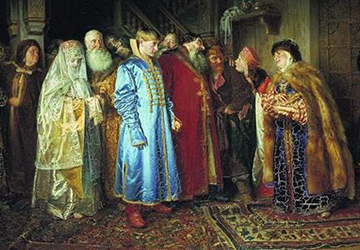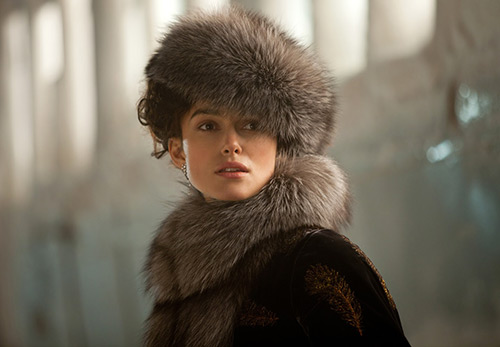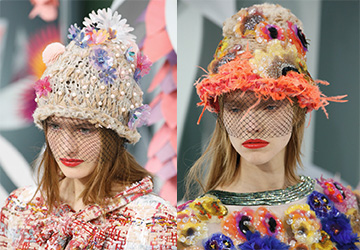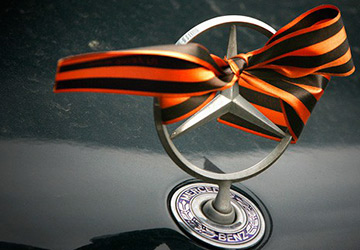Jewelry
Gold women's hat - Cap of Monomakh
In his wills, Prince Ivan Danilovich - Ivan Kalita (grandson of the famous Alexander Nevsky) listed in detail all sorts of little things: fabrics, clothes, everything to the last stone. In history, he is known not only as a prudent owner, but, most importantly, as a far-sighted and intelligent politician. He always acted deliberately and prudently, gathered Russian lands around Moscow, so that Russia would grow stronger, and not split into small principalities. Many times he had to travel to the Golden Horde. And each time the prince wondered - will he come back? That is why he often had to draw up wills, or as they called "spiritual letters" at that time, where all his savings and treasures were copied. Here is one of the lists left by the Grand Duke:
Gold chains - 12
Valuable belts - 9
Gold bowls - 6
Gold charms - 2
Gold platter with pearls and stones - 1
Gold vessels - 4
Gold box - 1
Golden Hat - 1
It was these wills that were the first mention of the hat - the "golden hat", as historians suggest, which was subsequently passed on from one Grand Duke to the next, from one Tsar of All Russia to another.
Modern researchers have proven that the hat is of eastern origin, and besides this, it has undergone changes during its long life.
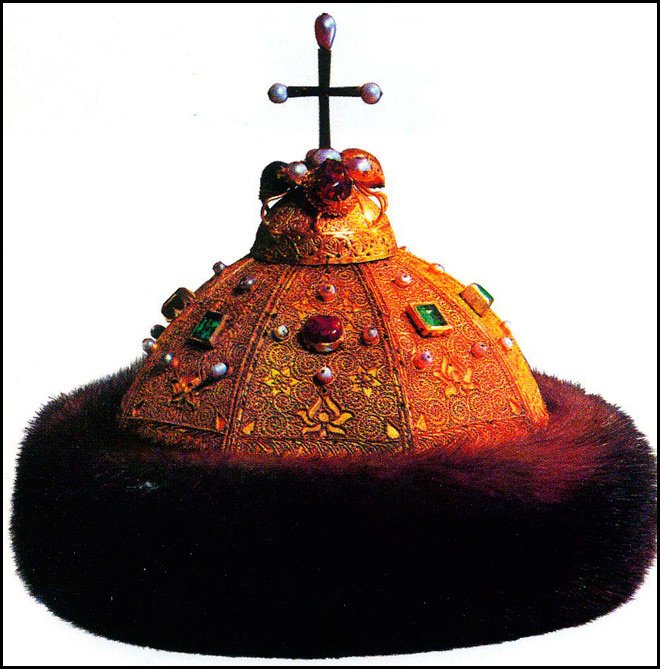
But why is it called that - Monomakh's hat?
Around 1518, a version of its origin is formulated: Monomakh's hat is a gift from the Byzantine emperor Constantine IX Monomakh to his grandson, Prince of Kiev Vladimir Vsevolodovich Monomakh. What was this legend for? In 1453, Byzantium fell, the once brilliant, but now rotten Byzantine Empire, which had existed for eleven centuries, fell. Did the second Rome fall after the first? Where is the third one? The Third Rome is Moscow! The Grand Duke Ivan III proclaimed himself for the first time the Grand Duke of All Russia, or the Sovereign of All Russia. He became the first autocratic ruler of a powerful state. And Monomakh's hat became, as it were, a symbol of the continuity of power Russian princes from the Byzantine emperors.
Monomakh's hat is a woman's hat.
And again, back to ancient Russia? Monomakh's hat could not have belonged to Vladimir Monomakh, since Konstantin Monomakh died when Vladimir did not know how to mount a horse yet - he was no more than two years old. And that he would become the Grand Duke of Kievan Rus, and there was not even a question. Researchers have proved that the beginning of the origin of the cap is in the XIII-XIV century. There are many versions - who owned this hat. One of the most probable versions, as historians suggest, is that this hat could have been a gift from Khan Uzbek to Prince Yuri Danilovich or his brother Ivan Kalita. The hat could appear together with the appearance in Russia of the sister of the Khan Uzbek, who became the wife of the Prince of Moscow Yuri Danilovich. Moreover, some researchers are inclined to believe that Monomakh's hat was originally a woman's hat. This is confirmed by archaeological finds and treasures, in which women's headdresses are very similar in their own way to the Monomakh hat. In addition, the ornamental decorations of the cap are inherent in the art of the Golden Horde.
Monomakh's hat is decorated with rubies, emeralds and pearls, the fastening of which is similar to that of the finds from the Simferopol hoard. Feathers of an owl or peacock were inserted into the pommel of female hats of Turkic origin, and a cross was inserted into the cap of Monomakh. Monomakh's hat is decorated according to a certain principle: eight plates - four of them with a lotus motif. The lotus motif is of great importance, as it also carries a symbolic function. This motive is typical for the Crimea and the Volga Bulgars of the Golden Horde time.
In the descriptions of Eastern and European travelers, as well as ambassadors who visited the Golden Horde, it is reported that noble Tatar women had a headdress in the form of a helmet, which was decorated with gems, on the top there was a gold circle decorated with peacock feathers, which corresponds to the headdresses of the Turkic peoples that were part of the Golden Horde.
Monomakh's hat initially had a slightly different look: there was no fur edge, but there were so-called gold chains - pendants that correspond to a woman's headdress. The ambassador of the German Emperor Maximilian I to the Grand Duke Vasily III, Baron Sigismund Herberstein, describes Monomakh's hat, elegantly decorated with pearls and gold plaques, which swayed, wriggling in snakes (we are most likely talking about pendants). But such an important part of the cap as the cross is not even mentioned, nor is the edge made of sable fur mentioned, which suggests that they were not there before. Both the cross and the edge appeared a little later.
The beauty of the hat is due not only to the abundance of precious stones, its surface is covered with lace patterned pattern, it is decorated with enamel.
Thorough studies of filigree allow us to call the hat a monument of the Golden Horde art, especially since scientists, art connoisseurs confirm that the technology of lace filigree is the school of the Golden Horde filigree masters of the Crimea and the Volga region at the beginning of the XIV century. However, those like her were already known in the Volga region in the pre-Mongol period, in the X-XII centuries. This is confirmed by archaeological finds. women's jewelry that period.
The symbol of the autocracy of Russia - the Monomakh hat was used only for weddings to the kingdom. For the first time, the grandson of Ivan III, Dmitry, who, as is known in history, was not destined to become the sovereign of all Russia, was married to the kingdom with the cap of Monomakh in 1498. It was Vasily III, the son of Ivan III and Sophia Palaeologus, niece of the last Byzantine emperor ... Be that as it may, but this was the time when Russia completely got rid of the Tatar-Mongol yoke and turned into a powerful great state.
A few decades later, young Ivan IV, the future Ivan the Terrible, married her to the kingdom.
Monomakh's hat becomes a symbol of the centralized power of Russia, a symbol of the highest state power.
Most likely, further research will help confirm the origin of the Monomakh cap ...
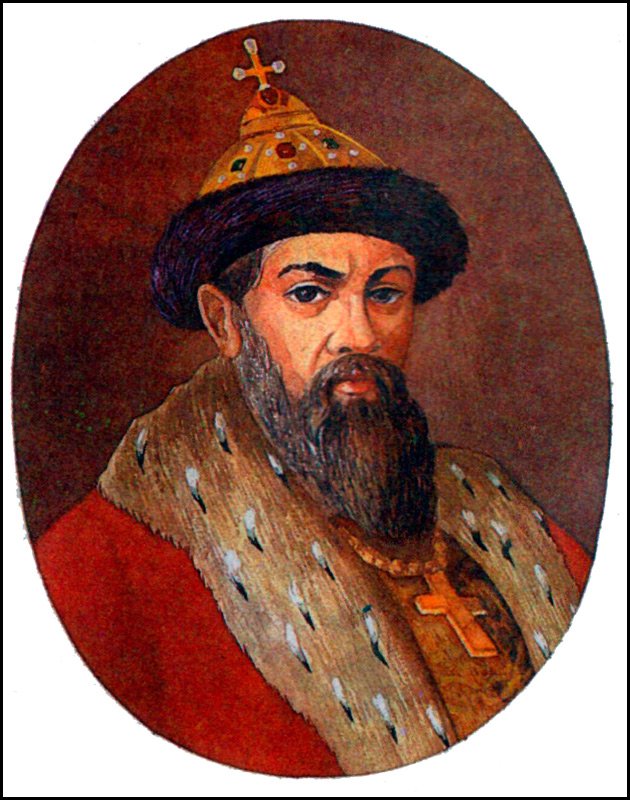
In addition to the golden cap, there is also a salad called the Cap of Monomakh. It was tempting to make a salad like this and post a photo shoot of the process, but it's probably best to leave mystyle.decorexpro.com/en/ a trendy site devoid of recipes. If desired, a salad recipe - Monomakh's Hat, can be easily found on numerous culinary sites.
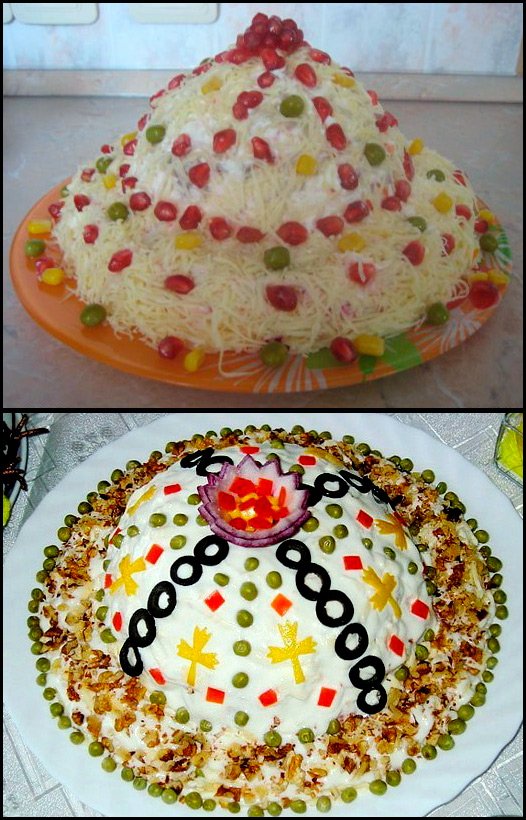
Gold women's hat - Monomakh hat for the Magazine mystyle.decorexpro.com/en/
Comments and Reviews
Add a comment
Rating news
Shades of clothing that make women look younger
What shades of hair make women younger: rules and photos
Funny wedding dresses - photos and ideas
12 most expensive down jackets for the winter
How to look 25 at 40: tips from supermodels
Beautiful schoolgirls
Anti-aging haircuts and hairstyles for women
Fashionable skirts for autumn and winter
Fashionable women's trousers for the cold season
Fashionable and stylish sandals for summer 2024
Spring-summer 2024
 Fashionable dresses and tops with thin spaghetti straps
Fashionable dresses and tops with thin spaghetti straps
 Bandana tops: how to wear stylishly and beautifully
Bandana tops: how to wear stylishly and beautifully
 How to put together the perfect men's wardrobe for the summer
How to put together the perfect men's wardrobe for the summer
 Fashionable shorts for spring-summer 2024
Fashionable shorts for spring-summer 2024
 Fashionable skirts for spring-summer 2024: a guide to online shopping
Fashionable skirts for spring-summer 2024: a guide to online shopping
 The most fashionable dresses spring-summer 2024: styles and colors
The most fashionable dresses spring-summer 2024: styles and colors
 Fashionable total look 2024: ideas of images and trends
Fashionable total look 2024: ideas of images and trends

